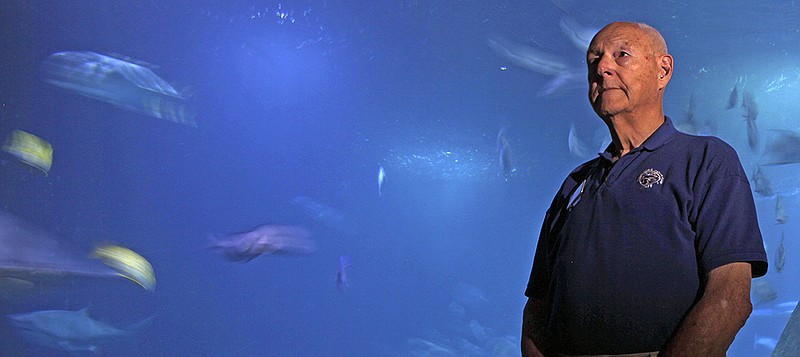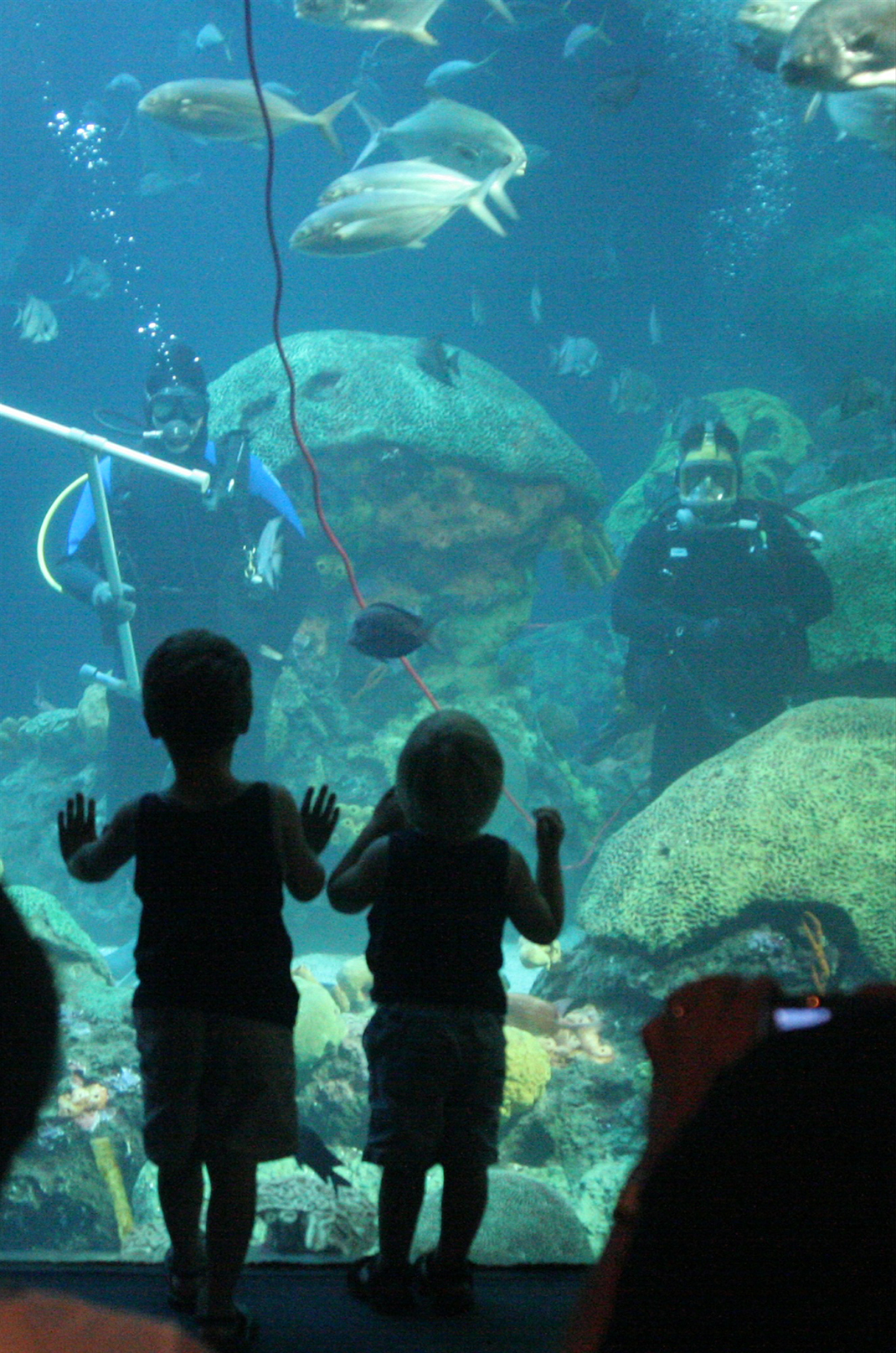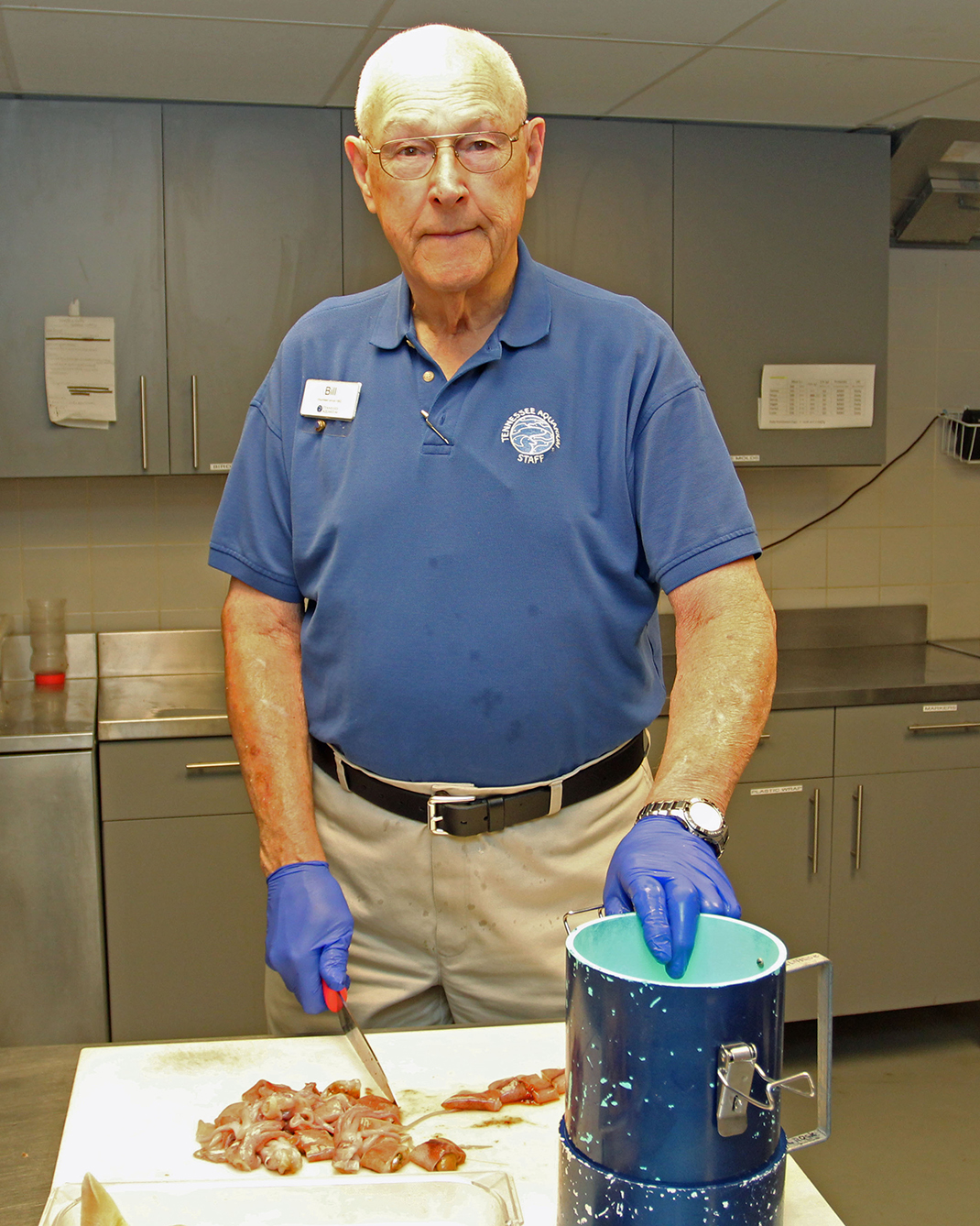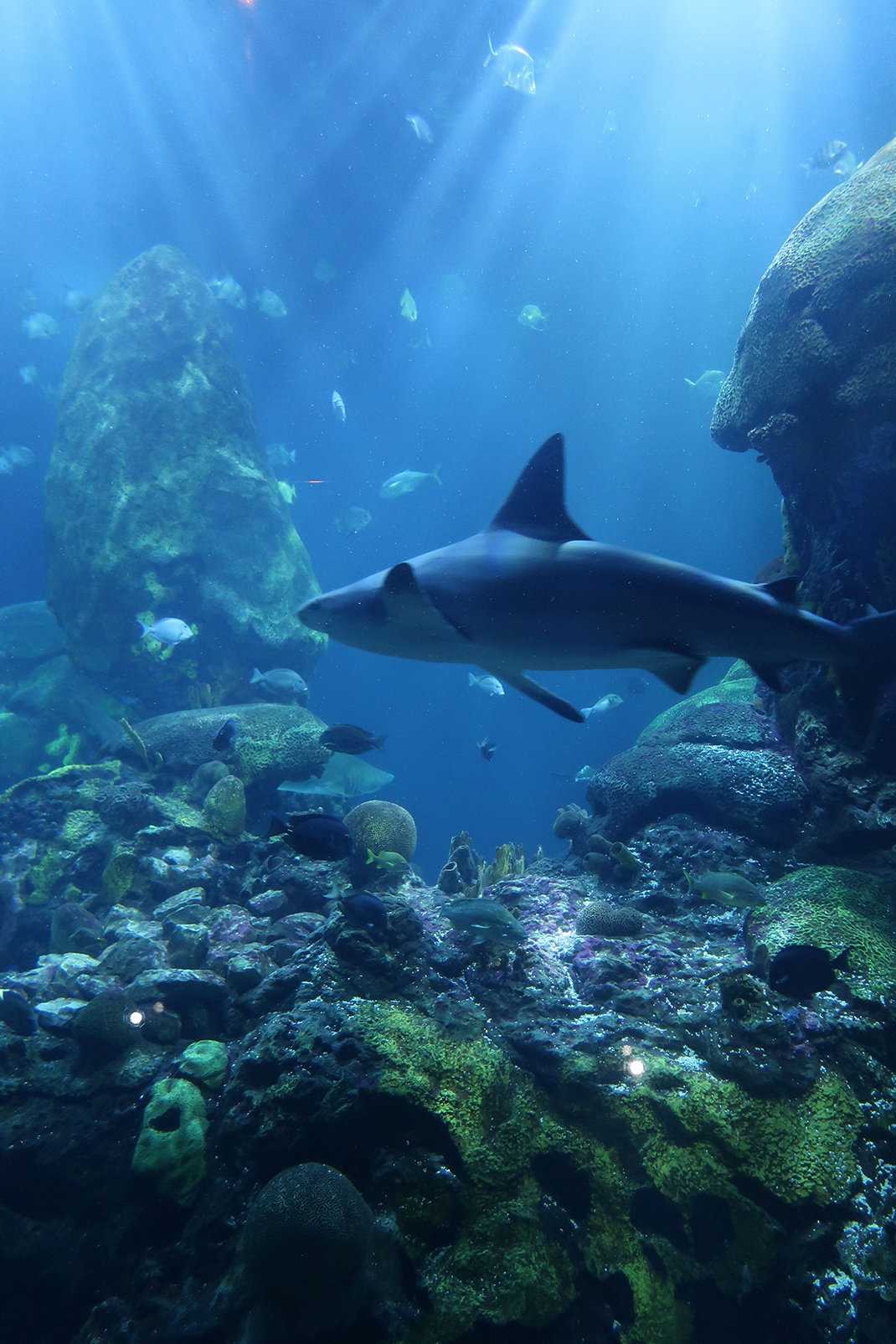Bill Godsey has been bitten by nearly every species of fish at the Tennessee Aquarium.
The alligator gar, with its rows of needle-sharp teeth, will draw blood, Godsey says, while the 40-pound crevalle jack's bite feels like sandpaper. The stingray has what are called "jaw teeth," two hard plates used to crush shellfish.
"[The stingray] bites pretty hard. You don't want to jerk your hand back. Just wait for it to let go," says Godsey, whose knowledge of the aquarium's 420 fish species is as vast as its 6,000-gallon Secret Reef exhibit, where the crevalle and the stingray live. (The gar is on display in the River Giants exhibit.)
Godsey, 82, has been inside each of the aquarium's 40-plus tanks. He has volunteered with the aquarium since it opened in 1992. In August, he officially logged 10,000 volunteer hours - an achievement reached by only one other volunteer in the aquarium's 25 years. Godsey was among the aquarium's first five volunteer divers, helping to establish the program, which now has a roster of 184 volunteer divers.
But Godsey is more than a pioneer of the aquarium's dive program; he is a pioneer of scuba diving itself.
Godsey's first dive was in 1956 when a Navy friend of his returned to Tennessee with scuba equipment.
"It was just something that nobody else was doing," Godsey says, explaining the appeal for him.
That day, the two went diving in a Hixson quarry. Sadly, Godsey says all they saw were rocks. Still, he was hooked.
Over the past 61 years, Godsey has dived all over the world, from the Caribbean Sea to the Red Sea. As a volunteer diver with the aquarium, he was able to maintain his scuba skills between trips. Besides, the biodiversity among the aquarium's many tanks boasts more colors than the rainbow.
Lakes and rivers are often too murky to see wildlife, but at the aquarium, Godsey has become well acquainted with wondrous creatures, such as the 7-foot-long paddlefish, a freshwater species native to West Tennessee and named for its long, paddle-shaped bill.
Over the decades, Godsey's work at the aquarium has included feeding fish, cleaning tanks and maintaining diving equipment. Typically, he volunteers every Monday, which he calls "the heavy feed day." When Godsey arrives in the morning, he begins to prep fish food: clam; krill; smelt; shrimp. Most of the fish are hand-fed, or fed with tongs - which Godsey soon learned was good practice when feeding the toothier species, like the gar.The sandbar shark and the sand tiger shark, residents of the Secret Reef exhibit, are exceptions.
"Fish only bite when they want something to eat," says Godsey, who, fortunately, has never been bitten by one of the aquarium's sharks. None of the divers have, and the aquarium would like to keep it that way, he says.
To prevent sharks from associating humans with food, divers no longer enter the Secret Reef to feed fish. Instead, food for the smaller species is pumped into the tank. The sharks, however, are target-fed so that their diets can be tracked. In the afternoon, Godsey helps with this task. It is critical to the other species within that exhibit that the sharks remain full.
To feed the sharks, one staff member stands over the tank, pole-feeding each individual shark. Godsey watches from below, keeping record of who has eaten what. He can distinguish between the two sandbar sharks and the four sand tiger sharks based on their markings.
"No. 1 is smooth. No. 2 has a dimple by its fin. No. 3 looks like someone took sandpaper and rubbed its nose. And No. 4 has a white spot on its face," Godsey says, describing each of the sand tigers.
Godsey says he has never been afraid of any of the fish. Though, he admits, in his early volunteer days, a few of the fish unsettled him. He remembers the first time he dove with the arapaima, a large, freshwater fish native to South America.
"As soon as I got into that tank, there one of them was - a 6-foot fish right in my face. When we started to feed them, they open their mouth and, SLAP! When they shut their mouths it sounded like somebody had smacked their hands together," Godsey says.
In 1953, Jacques Cousteau, nicknamed "the father of scuba diving," co-authored a book about his underwater experience, titled "The Silent World."
"But go into the ocean at night, it's anything but silent," Godsey says. "Just about anything that clacks its mouth is making noise."
With the exception of a fish's occasional lip-smack, Godsey says the only underwater sounds he hears at the brightly lit aquarium are the thrum of the filter or the splash of recirculating water.
Last year, Godsey quit diving. Still, he never misses a shift.
"I'm getting too old for it," he says of the scuba diving that started his aquatic volunteerism. "The equipment is cumbersome and the doctor told me to back off."
Every Monday morning as he makes his way through the aquarium's familiar halls, visitors stop him with questions - to which he almost always knows the answer.
"If it wasn't for diving," he says, "there is a lot in the world I wouldn't know about and wouldn't have seen." And the same goes for the aquarium. "So many people would have never seen this stuff otherwise," says Godsey.



